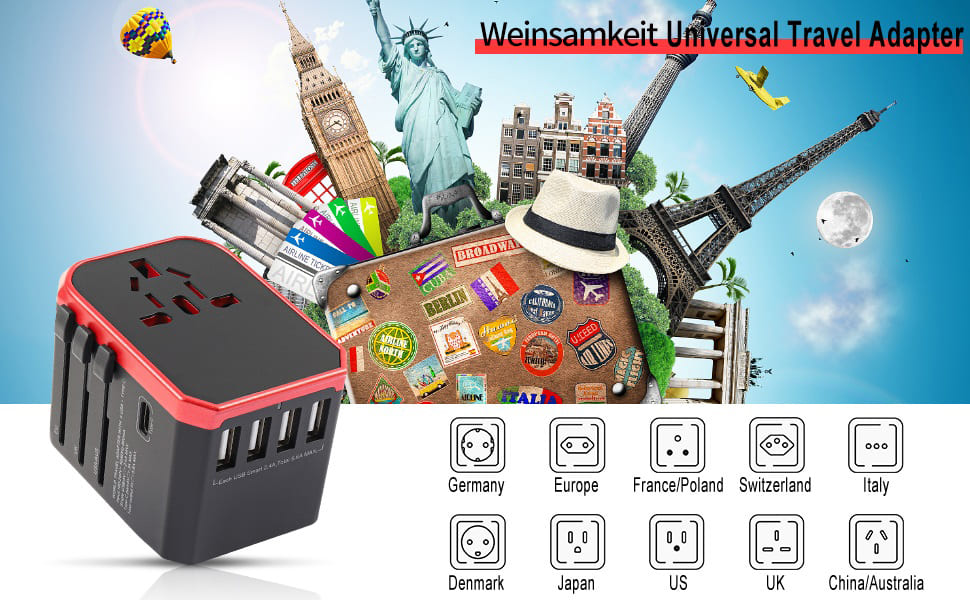Industry news
Worldwide Plug Guide: Never Get Stranded Without Power Again
Writer: admin Time:2025-07-23 15:48:08 Browse:729℃
Staring at a foreign wall socket with a useless charger? You're not alone. Over 1.4 billion people traveled internationally in 2023 (Source: UNWTO), and countless faced the universal frustration of incompatible plug types by country. Understanding these differences isn't just trivia – it's the key to keeping your devices alive and avoiding travel chaos. This guide cuts through the confusion, explaining why plug types by country vary, how to find the right one, and ensuring you're never powerless abroad.
Why Can't The World Just Use One Plug? (The Global Problem)
Imagine plugging your US hair dryer into a UK socket – it physically won't fit! Plug types by country vary wildly due to historical, safety, and regional standards. There are 15+ common plug and socket types globally (Source: International Electrotechnical Commission - IEC). For instance:
North America & Japan: Primarily Type A (two flat pins) & Type B (two flats + round ground).
Most of Europe: Type C (two round pins), Type E/F (two rounds + ground hole/clips).
UK & Ireland: Type G (three rectangular pins).
Australia & NZ: Type I (two slanted pins + ground).
My Bali Blackout: On a work trip, I assumed my European adapter would work everywhere in Asia. Wrong! My Type C plug was useless in Bali's Type G sockets. My laptop died during a critical presentation prep. Lesson learned: Always check specific destinations!
Plug Adapters: Your Tiny Travel Lifesaver (The Core Solution)
A travel plug adapter is a simple device that physically bridges the gap between your device's plug shape and a foreign country's socket. Its only job is shape-shifting. Think of it as a universal translator for your charger. It:
Converts Plug Shape: Lets your plug fit the local socket.
Provides Grounding (Sometimes): Quality adapters include grounding for safety with laptops/appliances.
Does NOT Convert Voltage: This is critical! Adapters only change the plug, not the electricity itself.
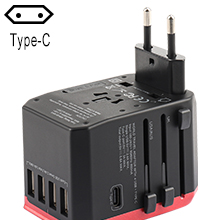
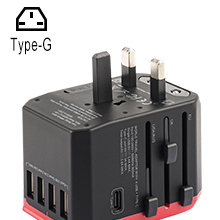
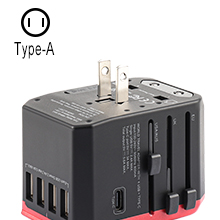
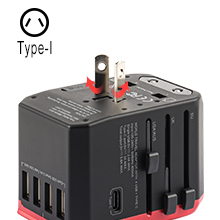
Adapter vs. Converter: Don't Fry Your Devices!
| Feature | Plug Adapter | Voltage Converter / Transformer |
|---|---|---|
| Primary Job | Changes plug shape to fit socket | Changes electrical voltage (e.g., 120V to 230V) |
| Needed For: | Physically connecting your device | Safely using single-voltage devices (110-120V only) in 220-240V countries |
| Example Use: | Charging a dual-voltage phone in Italy | Using an old US hair dryer (120V only) in France |
| Effect on Device | Safe for dual-voltage devices | Essential to protect single-voltage devices from damage |
| Cost/Size | Cheap, small, lightweight | More expensive, often bulky & heavy |
Key Takeaway: For modern phones, laptops, cameras (usually dual-voltage 100-240V), a plug adapter is sufficient. You only need a converter for older, single-voltage appliances (check the label!).
Finding Your Perfect Plug Match: A Step-by-Step Guide
Don't guess – follow these steps:
Identify Your Destination(s): Where are you going? (Country and specific regions matter!).
Check the Local Plug Type(s): Use a reliable plug types by country chart or database (like IEC, or reputable travel sites). E.g., Thailand uses Type A, B, C, and O!
Check Your Device Voltage: Look for "Input: 100-240V, 50/60Hz" on the charger or device. If it says only 110V or 120V, you likely need a converter too.
Choose Your Adapter:
Single-Country: Simple adapter for one plug type (e.g., US Type B to EU Type C).
Multi-Country: Regional adapter (e.g., covers all European Type C/E/F).
Universal: Covers most plug types by country in one device (great for frequent travelers). LSI Keywords: travel power adapter, universal plug adapter, international voltage converter.
Buy & Pack: Purchase from reputable brands. Pack adapters in your carry-on luggage!
Beyond Plugs: The Voltage Vigilance Warning!
Danger Zone! Plugging into the wrong voltage can destroy your device. Here's the breakdown:
Dual-Voltage Devices (100-240V): These are global superstars! Just use the correct plug adapter. (Most modern electronics).
Single-Voltage Devices (e.g., 110-120V ONLY): Plugging these into a 220-240V outlet (common in Europe, Asia, Africa, Australia) will likely fry them, even with an adapter. You must use a voltage converter rated for the device's wattage, or leave it home. Common culprits: Hair dryers, straighteners, curling irons, old electric shavers, some kitchen appliances.
LSI Keywords: electrical outlet types, international power standards, country voltage guide.
Powering Multiple Devices: Strips & Hubs
Traveling with a family or lots of gear? Level up:
Travel Power Strip (with Surge Protection): Plug one adapter into the wall, then plug multiple devices (like US plugs) into the strip. Crucial: Ensure the strip itself is rated for the local voltage (e.g., 240V)!
USB Travel Hub: Charge phones, tablets, power banks via USB ports from one adapter-connected charger. Saves space and adapters!
Worldwide Plug Types FAQ: Your Questions Answered
Q: Is there truly a universal plug adapter that works everywhere? A: While "universal" adapters cover most plug types by country (like Types A, B, C, E/F, G, I), no single adapter fits literally every socket globally (e.g., Type D in India or Type M in South Africa might need a specific adapter). Check coverage for your destinations.
Q: Do I need a different adapter for Italy vs. France? A: Usually not. Both primarily use Type E and F sockets (two round pins with grounding). A standard "Europe" adapter works. However, always double-check your specific locations!
Q: Can I use a plug adapter on a cruise ship? A: Cruise ships often use North American (Type A/B) or European (Type C/F) sockets, sometimes both. Check with your cruise line. However, voltage might vary – confirm if converters are needed for single-voltage items.
Q: Are cheap plug adapters from discount stores safe? A: Proceed with caution! Extremely cheap adapters might lack proper grounding, use flimsy materials, or not meet safety standards. Invest in reputable brands (like Ceptics, Conair, OneAdaptr, Orei) for peace of mind and safety.
Q: What's the most common plug type worldwide? A: Type C ("Europlug") is arguably the most widespread physically due to its use across Europe and adoption in many parts of Asia, Africa, and South America. However, regional standards mean you still need to verify your destination. LSI Keywords: global plug types, international socket types, travel electrical adapter.
Your Pre-Flight Power Checklist: Don't Forget!
Before you jet off, ensure you have:
☑ Plug Adapters for each destination's specific socket type(s)
☑ Voltage Converter (ONLY if bringing single-voltage 110-120V appliances - verify wattage!)
☑ Surge Protector Power Strip (Crucial for unstable power grids)
☑ USB Travel Hub (For efficient USB device charging)
☑ Verified Device Voltage Labels (Confirm "100-240V" on ALL electronics)
☑ Destination Plug Type Info (Double-checked via reliable source)
Plug In & Explore the World with Confidence
Understanding plug types by country and voltage differences transforms a potential travel headache into a non-issue. Armed with the right plug adapter (and converter if needed), you eliminate the risk of dead devices and fried gadgets. Do your homework using reliable plug types by country resources, pack smart using our checklist, and focus your energy on the adventures ahead – not on hunting for an adapter in a foreign electronics store. Stay powered, stay connected, and explore the world seamlessly!
CATEGORIES
LATEST NEWS
- What are the differences in plugs (chargers) among countries around the world?
- Answers to frequently asked questions by customers
- Worldwide Plug Adapter with Fast Charging for Singapore South Korea
- The Ultimate Universal Travel Adapter with USB-C for Business Trips
- Choosing a Travel Plug Adapter for Germany France Business Trips
CONTACT US
WhatsApp: xxxxxx
Phone: 18128986700
Email: zhozuoplug@hotmail.com
Add: Dongguan City, Guangdong Province, China
